#Robe a la Francaise
Text

Robe à la française c. 1760
108 notes
·
View notes
Photo
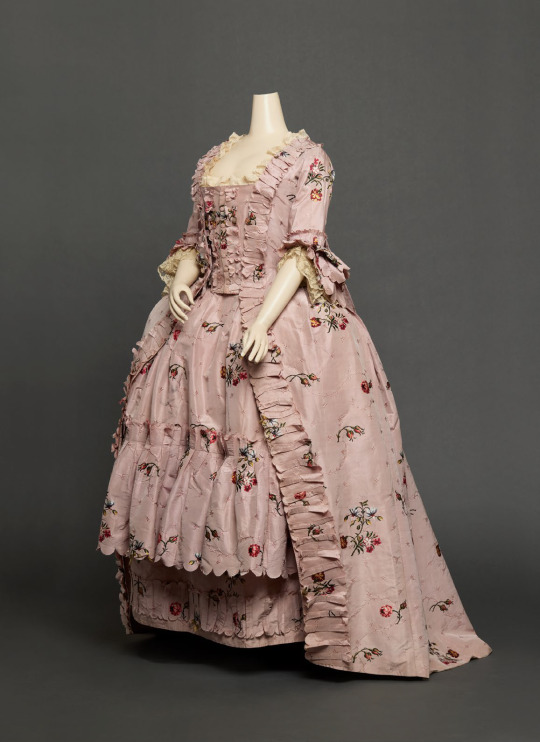
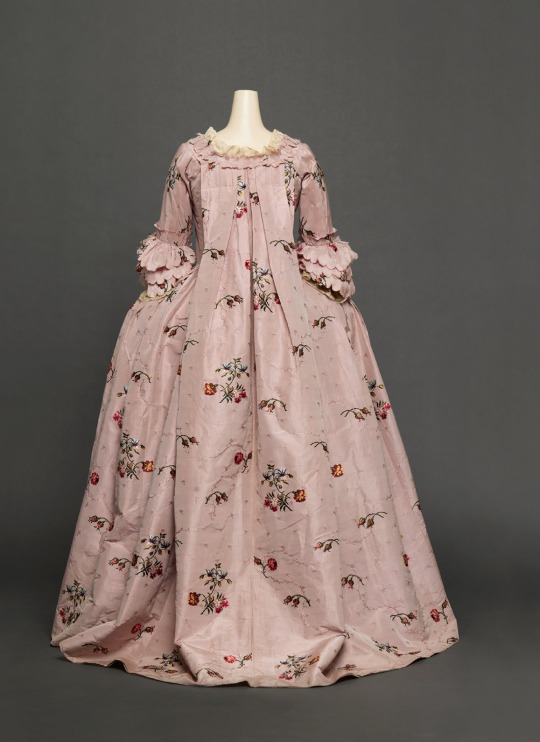

Robe à la française ca. 1750-60
From Cora Ginsburg
2K notes
·
View notes
Text


Robe à la française
1750s; Altered 1780s & Late 19th Century
France & England
The ensemble was probably made as a sack and petticoat in the 1750s. In the 1780s, the sack was updated in style. A waist seam was probably added, the skirts reconfigured, and sleeve ruffles removed. The half-stomachers were added at this time and the bodice fronts relined. The back lacing was reconfigured and more eyelets worked.
The ensemble was altered for fancy dress in the late 19th century. Hooks and eyes were added to the bodice stomacher fronts and machine-lace ruffles to the sleeves. The petticoat may have been unpicked at this point.
The petticoat was gathered onto a cotton band after acquisition for Museum display. (V&A)
Victoria & Albert Museum (Accession Number: CIRC.157-1920)
#robe a la francaise#fancy dress#fashion history#historical fashion#1750s#1780s#19th century#georgian#victorian#france#england#v and a#v and a museum#popular
1K notes
·
View notes
Text
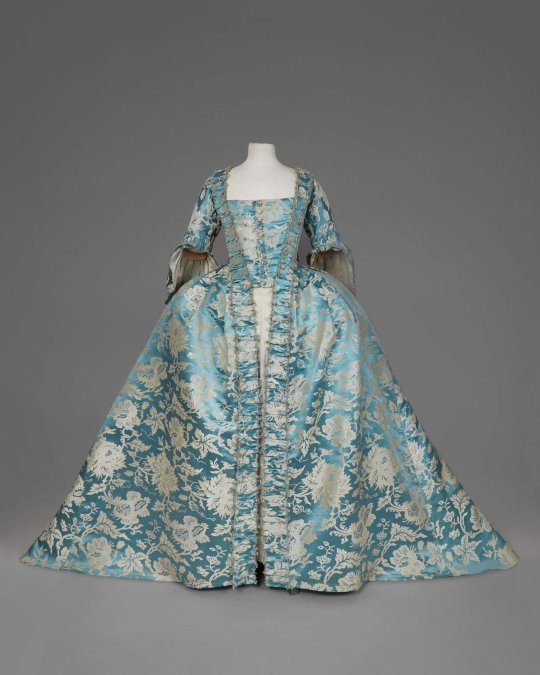

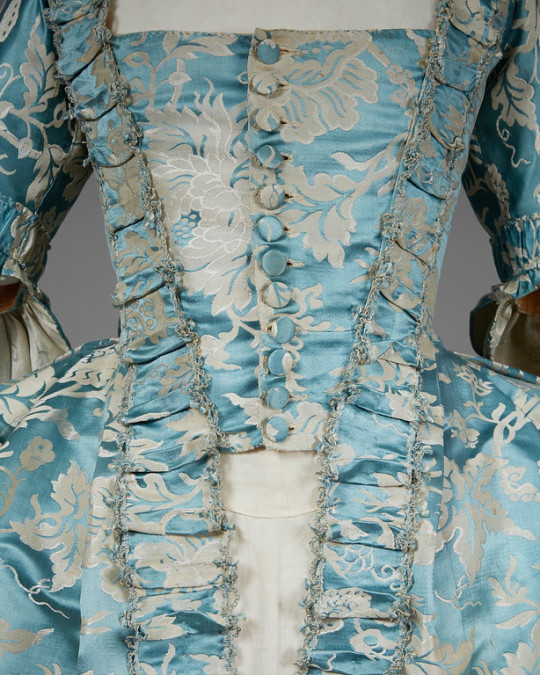

Teal Silk Brocade Mid-eighteenth Century Robe a la Francaise (Robe du Cour). Whitaker Auction Fall 2016.
746 notes
·
View notes
Text
Robe à la française, 1750s.
Woven pink silk incorporating silver metal thread and silver metal strip.

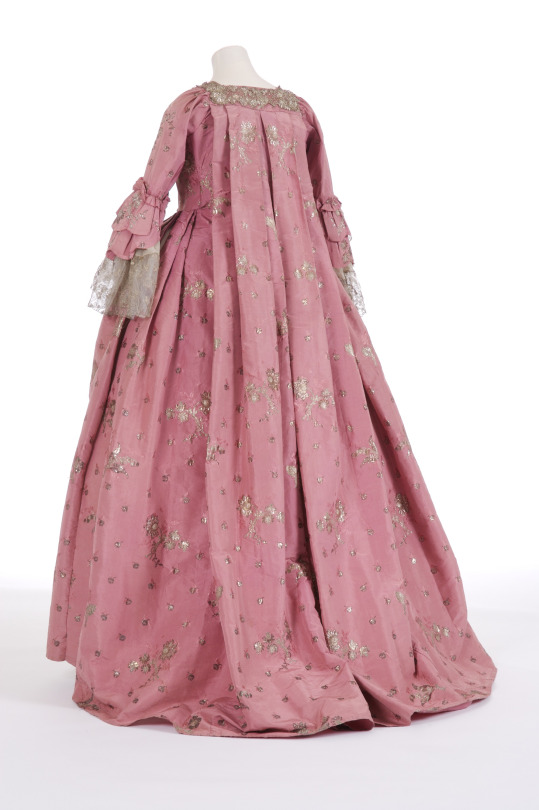
Fashion Museum Bath Twitter
234 notes
·
View notes
Text

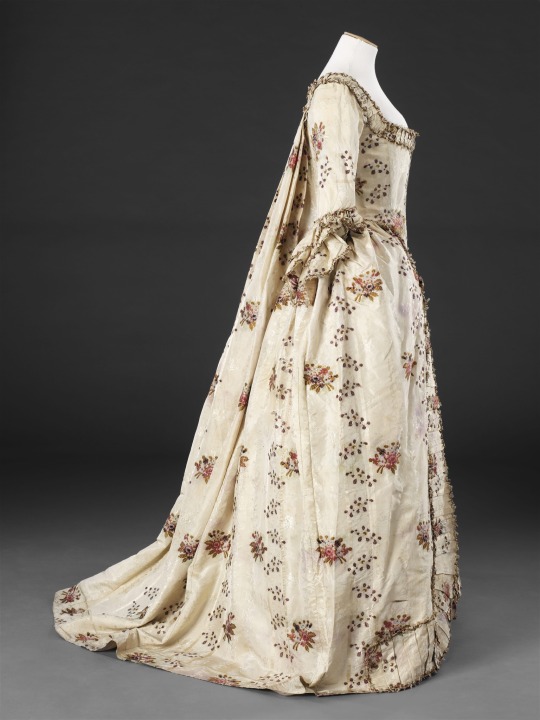

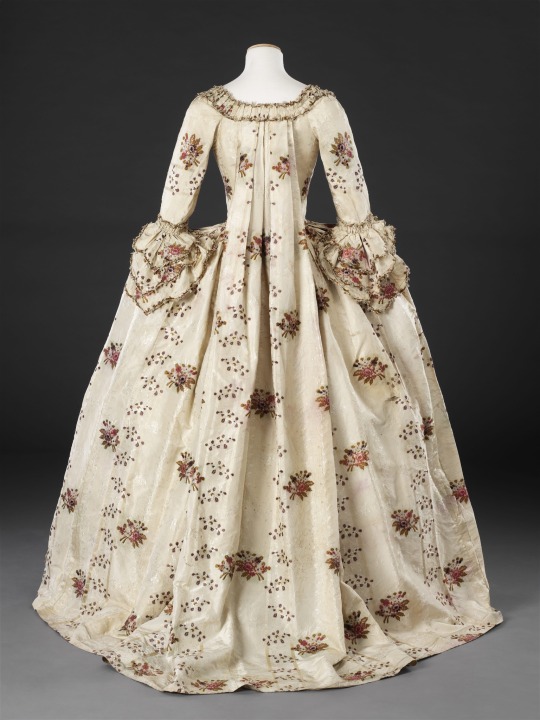
robe à la française
c. early 1770s to early 1780s
brocaded silk trimmed with silk braid
The John Bright Collection
#robe a la francaise#18th century#1700s fashion#1700s#1770s#1780s#historic dress#history of fashion#historical fashion#fashion history#historic fashion#fashion#dress#dress history#frostedmagnolias
626 notes
·
View notes
Text


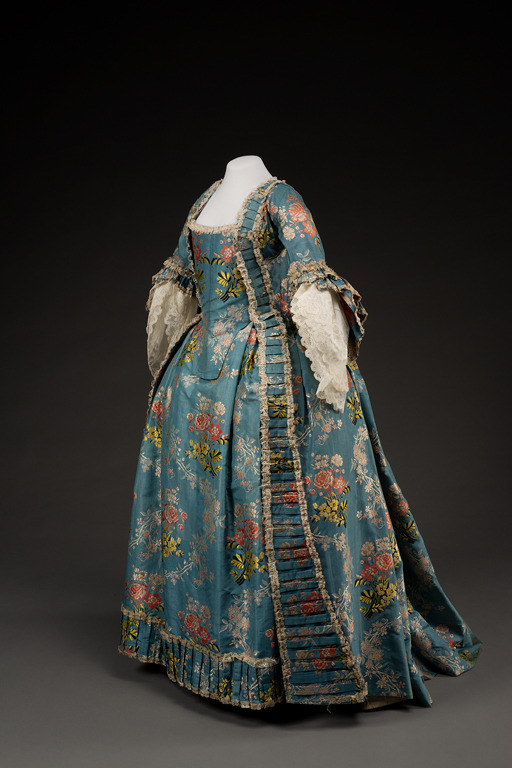
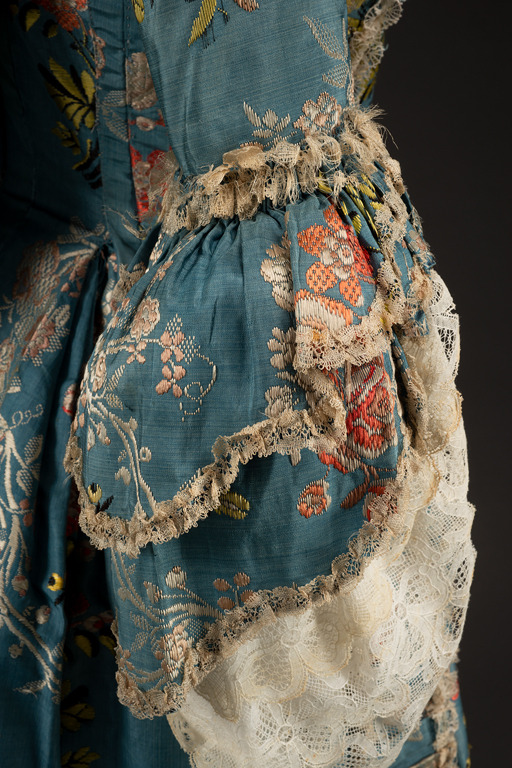
Blue gowns in this period (1765-1770) are rare, but this one just blows my mind because of the pattern matching situation going on.
Do you ever wonder why you don't see lots of dresses in the same patterns? That's because bolts of cloth were often made to order, or in such small batches that there would only be enough for one or two dresses--especially when there was this much fabric involved. Matching patterns with this much precision took incredible skill, and not a lot of room for mistakes.
According to the museum, this dress in in three parts: the petticoat, stomacher, and open robe. And they are "largely unaltered"--which is another rarity. Materials of this quality were often so sought after that the were re-cut and sewn decades, and sometimes, centuries after. Or, refitted to new wearers.
Image Credit: © Historic Deerfield, Photo by Penny Leveritt
#costume history#silk dress#costume#historical costuming#textiles#history of fashion#threadtalk#fashion history#robe a la francaise#brocade#georgian fashion#extant garments
906 notes
·
View notes
Text

Robe à la Française, c.1770
448 notes
·
View notes
Photo

#Robe a la Francaise#Baby the Stars Shine Bright#Old School Lolita#Hime Lolita#Lolita#Lolita Fashion#JFashion#Japanese Fashion
2K notes
·
View notes
Text

a snap from the fête. // IG
#rococo#marie antoniette 2006#marie antoinette#late baroque#pastel aesthetic#historical clothing#historical costume#princesscore#fairytale aesthetic#white aesthetic#white dress#18th century#18th century costume#18th century fashion#mignonne#2022#robe à la française#robe a la francaise#pastel purple
833 notes
·
View notes
Text

Princess Peach by way of promotional image for a 1950s opera performance.
photo by andrew bastion photography
#princess peach#princess peach cosplay#historical costuming#robe a la francaise#mario#princess cosplay
60 notes
·
View notes
Photo

Robe à la française ca. 1765-75
From the Museum of Vancouver
511 notes
·
View notes
Photo

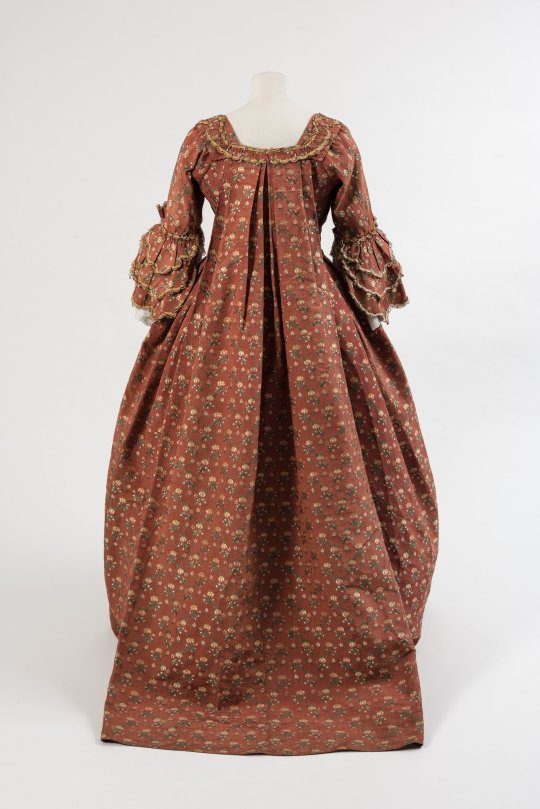
Robe a la francaise
c.1770
Fashion Museum Bath via Twitter
#robe a la francaise#fashion history#historical fashion#1770s#rococo era#18th century#1770#united kingdom#brown#orange#floral#flower print#fashion museum bath
471 notes
·
View notes
Text
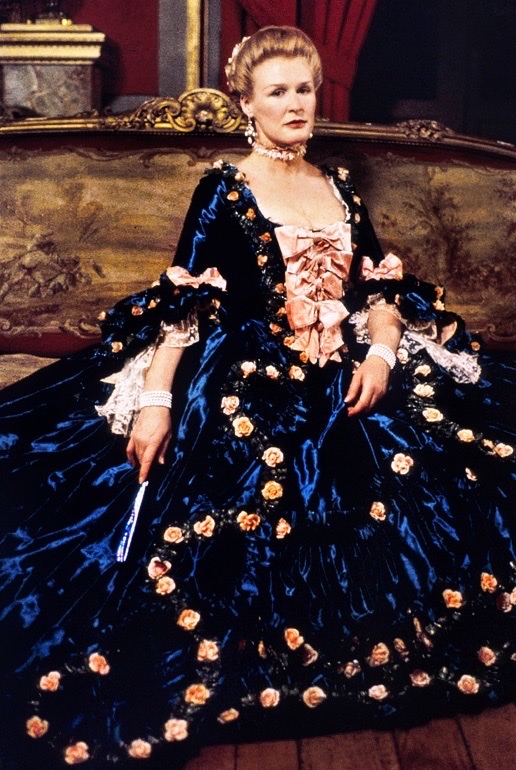
Dangerous Liaisons (1988) dir. Stephen Frears
#source: historical beauty lily#period drama#perioddramaedit#blue dress#rococo#18th century fashion#18th century#glenn close#Madame pompadour#costume drama#aesthetic#robe a la francaise#dangerous liaisons
104 notes
·
View notes
Text

French or English dress, c. 1760, silk damask with silk supplementary weft. Emma Harter Sweester Fund. 81.290ab, Indianapolis Museum of Art via the Dreamstress
#I've searched everywhere for the front view but it's unavailable#I found the original link to the dress at the online museum but it was taken down so the only thing I can share is this#sadly :(#fashion history#historical fashion#18th century#robe a la francaise
197 notes
·
View notes
Photo

Robe a la francaise, 1770.
172 notes
·
View notes